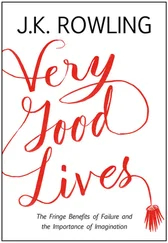Is it melodramatic to say that for the month of April, I was heavy with two children? There was the child in front of me, of course. Twice a week I went for monitoring, first fetal heartbeat and responsiveness, then amniotic fluid. Once a week we went to see Dr. Knoeller. All the signs looked very good.
But Pudding was with me then, and stronger than ever. Fifty-two weeks before, I’d walked the roads near Savary, hoping to trigger labor. Fifty-one weeks before, I’d sat in Bordeaux cafés, crying. I had been sad for nearly a year, but I had gone forward . That had been our plan all along. “We can only go forward,” Edward had said a dozen times, two dozen, all through our Holt summer, and every time I made the merest noise of wondering how it might have turned out otherwise, he would say lovingly, firmly, “Sweetheart, don’t.” He was right, of course. Blame is a compulsive behavior, the emotional version of obsessive hand washing, until all you can do is hold your palms out till your hands are full of it, and rub, and rub, and accomplish nothing at all. And so we grieved but looked straight ahead.
And then — did I mention this? — it was April again, and I was pregnant again, and there were so many ways, it seemed, that disaster could strike, and nearly though not quite as many ways it could be averted. My hips ached the way they had the year before. I had trouble turning over in bed the way I had. People said, Any day now! And, Have you had that baby yet? On April 30, I had my first real crisis of faith. “This baby isn’t moving,” I told Edward, and I called the practice, and they told me to come in, and the nurses rushed me into the examination room, and everything was fine.
Dr. Knoeller ran into us in the hall.
“I sort of freaked out,” I said, and she said, “If this is the first time, I think you’ve done very, very well.”
It was almost May. I wanted to get through it, and I wanted to remember.
On April 26, 2006, a week after my American due date, Edward asked me, as he often did, “What’s Pudding up to?”
“He’s not moving around so much,” I said. I touched my stomach. I was sitting in Savary’s weird L-shaped dining room, next to the only phone outlet in the entire enormous house, so I could check my e-mail. Every now and then, I felt a dim stirring.
“Really?” he said.
“I don’t know,” I said. Everything I read said that babies move less when they’re getting ready to be born: they have less room.
“Should we call someone?” he asked.
And there it is: the first moment I can look at and say, we could have changed things. This is the moment that Superman flies in and puts his hand on the fender of the runaway car to let the child in his cloth coat go toddling into the road after the bright kicked ball.
“No,” I said. “Let’s wait till morning.”
The only reason that writing about this moment doesn’t make me weep so hard I can’t type is that it’s just one of a dozen.
The next morning I lay in bed with my hands on my stomach and then phoned the local fox-faced midwife. As usual, I got her cell phone’s voicemail. She called back a few minutes later.
“Could I come in and see you?” I asked. “The baby’s not moving as much as he was.”
Yes, she said, that happened. But all right. She had many appointments, but at about five —
“Claudelle,” I said, “I’m really worried,” and I hadn’t realized until I said it how worried I was. For some women — me, for instance, during my second pregnancy — hyperworry is a side effect, as sure as high blood pressure or high blood sugar. Your body just produces more, which means you do what you can to manage it. But back then when the worry flooded in, I believed it was serious, because it was anomalous.
“All right,” she said. “Come now.”
Claudelle’s waiting room was a glassed-in porch at the back of the house, outside of her office. We had waited there for plenty of appointments, looking over the back fence at the house next door. This time we sat on the wicker sofa for a few minutes, fretting.
She pulled back the curtain over the window in the door, saw us, and waved us in. Her office was decorated in the sort of filmy orange and blue color scheme that acknowledges you might wish to be elsewhere. Her examining table was stirrupless, massage-worthy. The only overtly medical object in her room was an old-fashioned black doctor’s bag, the kind carried by Norman Rockwell GPs. From this, that Thursday morning, she extracted a fetal heart monitor, to give me what is called in America a nonstress test.
This is of course a contradiction in terms, because listening to anyone’s heartbeat for half an hour is stressful: it changes, and you want to ask the medical professional, Is that all right? Too fast, too slow? The suspense is terrible. Nonstress just means the heart rate and uterine contractions (if any) are monitored to see how the baby is reacting to normal life in the womb without the added stress of medication to mimic contractions. I’d had a routine nonstress test the week before, when Sylvie, the other midwife, had come to the house.
“There he is!” said Claudelle now, having found the heartbeat.
We’d heard plenty of different monitors by then: the wuAHwuAHwuAH of a silver flying saucer sailing to earth in a 1950s sci-fi movie, a ponyish clippety-clop, an expressionless chain of beeps. Claudelle’s usual heart monitor, the one she held to my stomach for uneventful checkups, was horsey, but this one sounded like the forlorn footsteps of a tiny man, walking around a series of corridors, looking for a door. Tok tok tok tok. She pulled at the strap that held the device to try to get closer but couldn’t. In my memory the heartbeat got louder and quieter — the tiny man turned a corner, tried a knob, retraced his steps — but that doesn’t make sense. Pudding was still alive then, but he probably wasn’t moving.
I lay on my side. When Sylvie had tested me the week beforehand, she’d given me a button on a cable to press when I felt Pudding move, but this time I just kept still and listened. The machine spit out a pen-etched tape, like a polygraph result in the movies. Claudelle studied it.
She was perfectly cheerful, she chatted to calm us down. It even worked for a while. Then she put one hand on either side of my stomach and shook. “Hello,” she said. “Bonjour, bébé. Wake up. Come, stop sleeping.”
Tok, tok, tok, tok.
She shook harder. “Wake up, baby,” she said.
After forty-five minutes, she took off the monitor.
“So?” I said.
“So,” she said. “I wish he would respond more, but it is not serious.”
When I was pregnant the second time, I became an old hand at nonstress tests: I had them twice a week, and mostly they passed without incident. To pass the test, you need four heart rate accelerations within twenty minutes, and I usually hit that mark within ten. The nurses praised the kid for being agreeable, for never needing to be yelled at or jolted into action with fruit juice, though one of the nurses did once slap me around the midsection. “Child abuse, and the kid’s not even born,” she said, as the heart rate sped up. “Ah, there he goes.”
At one of my last tests, I asked the nurse on duty, a sweet young woman with a gamine haircut and a two-year-old of her own, what happened if you failed a nonstress test.
“They’d keep you on for forty minutes,” she said, “to make sure the baby’s not just sleeping.”
And then? I asked.
“Well,” she said, “they’d send you to the hospital immediately.”
And then? I wondered, but didn’t ask.
This is the real Superman moment for me, as I sit at my computer, telling this story. I want to reach into the screen. I want to hit Return between I wish he would respond more and but it is not serious .
Читать дальше












